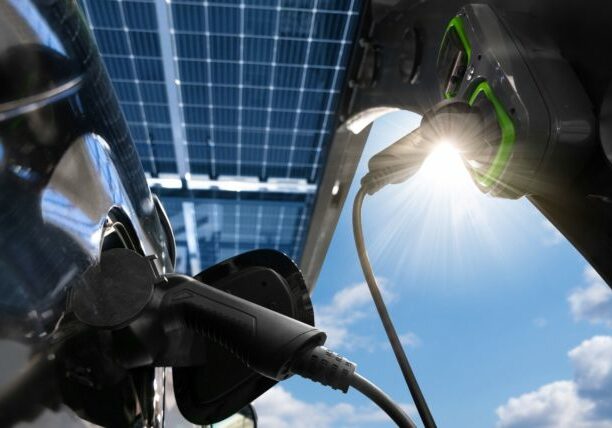September 30, 2013
Offshore Wind in Europe: Lessons for the U.S.
By Lewis Milford
There are a lot of great things Europe has that the U.S. doesn’t—comfortable taxis, good table wine, Idris Elba—and then there’s offshore wind, lots and lots of offshore wind.
I spent last week in Europe hearing from key offshore wind leaders —from top officials in industry, government and finance—about how they built a large, successful offshore wind industry. I learned some key lessons, and heard some precautions, about how we should go about offshore wind development in the U.S.
I listened to them with a wary ear. There are many differences between the U.S. and Europe on energy policy and, on some issues, we in the U.S. will never go Europe’s way. Nevertheless, in the area of offshore wind, U.S. energy policymakers can learn a lot from the lessons Europe has to offer.
Here is what I picked up from the leaders in the field.
A Large, Commercial Industry. Compared to the U.S. where we have no turbines in the water, in Europe offshore wind is serious business. Total installed capacity of offshore wind power from 55 wind farms (1,662 turbines) in ten European countries by the end 2012 was 4,995 MW megawatts, the combined capacity of several nuclear plants. More than $15 billion in investments has been made in the industry over the last 8 years. There were about 58,000 jobs in the industry in 2012, with growth expected up to 191,000 in 2020. Many of the major European public investment banks like the European Investment Bank, and public pension funds, are investing in the space.
Long-term Policy. Europe’s offshore wind surge did not happen by accident. The simple and strong message from industry leaders was plain: the only way a country (or a state) can develop a strong offshore wind industry is through a long-term policy in favor of offshore wind. Public officials and private sector representatives emphasized that targets committing to build large installations in stages over a twenty-year period have created the industry in Europe and are essential.
The U.S. approach so far—hit or miss, on-again off-again policy—will not work. The European experts all warned against such a self-defeating approach.
The UK and Germany have had fairly stable policies to promote offshore wind for about 20 years. Unlike in the U.S., Europe has a consensus in favor of offshore wind despite changes in governments.
A Commercial Industry, Not R&D. The key issue in Europe is how to get projects to scale, to co-locate multiple gigawatt projects, to raise billions of dollars. The talk there is not about more research, although that is happening. Instead, the industry walks and talks like a serious commercial sector poised for greater growth, unlike in the U.S. where governments tend to view this area as a research arena. The basic technology works, and more R&D won’t get existing technologies to scale. But, R&D and demonstration in new technologies like floating turbines could be important actions for the U.S. offshore wind market development.
How to Attract Supply Chains. European governments compete for the economic development benefits of the offshore wind industry, as in the U.S. But they realize that the most important way to get those benefits for their own countries is through favorable long-term policy—and not by poaching investments from other countries. Again, long-term national targets ensure projects and, in turn, those projects bring jobs and investment: a simple message repeated and confirmed across the European spectrum of opinion.
Critical Public Investment. Public investment is critical to this still-emerging industry. In Germany and the UK, public banks provide long-term debt to offshore wind projects and companies. The projects are expensive, many over $1 billion, so a mix of public and private capital is needed. In contrast, in the U.S., no government, federal or state, has yet committed to a public debt package for offshore wind projects. No state has yet done a financing deal except Cape Wind, through a utility mandate. No green bank has moved into the space, as the UK Green Bank has done with a $1.5 billion commitment over the long term.
Industry-Government Partnerships. Despite the recession and the pull back of banks from lending, the governments and industry look for ways to cooperate to deploy projects. While Europe is besmirched as the heart of government regulation or worse, success in offshore wind is all about private and public sector partnerships. These productive investment partnerships between the wind industry and the government occur with both liberals and conservatives in power.
EU Political Consensus. Many major governments across Europe promote offshore wind as one of the best hopes to produce large-scale sources of no-carbon power. For them, climate matters as a policy driver.
Waiting on the U.S. There are few European offshore wind leaders clamoring to build in the U.S. So far, the relative instability of U.S. offshore wind policy has convinced them to keep their money on their side of the Atlantic. The Siemens work in Massachusetts relating to Cape Wind is one bright spot. Currently, the risks are too high to encourage major European investment in a U.S. industry.
But not everything is perfect on the offshore front in Europe. And in that, there are more lessons for the U.S.
Costs Are Too High. The costs of offshore wind are still too high in Europe too. While they went down when more and larger projects were placed in shallow waters, costs are going up for projects in deeper water. As a result, European policy continues to be focused on cost reductions. So the U.S. is right to be concerned about high costs. The European industry and government leaders are working to do something about this. For them, more volume is the best cost-reduction strategy. And R&D funds are being allocated to develop newer, cheaper designs for accessing deeper water.
The Politics of Energy Price Spikes. The high energy costs are not politically popular. There are many reasons for fairly large spikes in energy bills across Europe, and one is thought to be the public investment in offshore wind. Governments have not solved that problem. In fact, in the UK, the Labor Party (now the minority party) promised last week to freeze energy bills if they win the next election. Again, this justifies a concern by U.S. energy officials.
Some Policy Flux Challenges. There is an ongoing debate about changes to the current policy for offshore wind in Europe. The difference from the U.S. debate is that there is general EU consensus in favor of the technology. There the discussion is instead over the details of already strong support policies, especially in the UK, to move to more market-based strategies. These potential changes have caused the industry to worry about the reliability of future government support. So policy flux is a problem there too, but on a much lesser level than in the U.S.
Stability Is the Message. But all in all, the message from Europe on offshore wind is one of stability and success, with a positive view of the future of the technology.
Here in the U.S., the coastal states and the federal government have a lot to learn from the decades of European experience with offshore wind. For states in the U.S. struggling with existing efforts or those looking to create new offshore wind policy, lessons from across the Atlantic are a good starting point for rebooting the offshore wind policy framework in the U.S.














